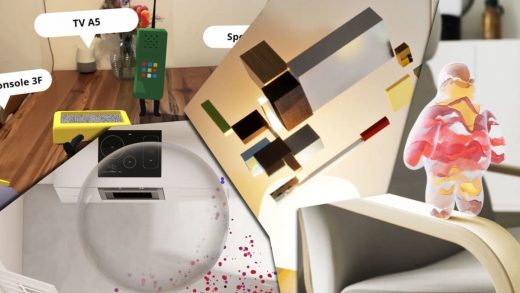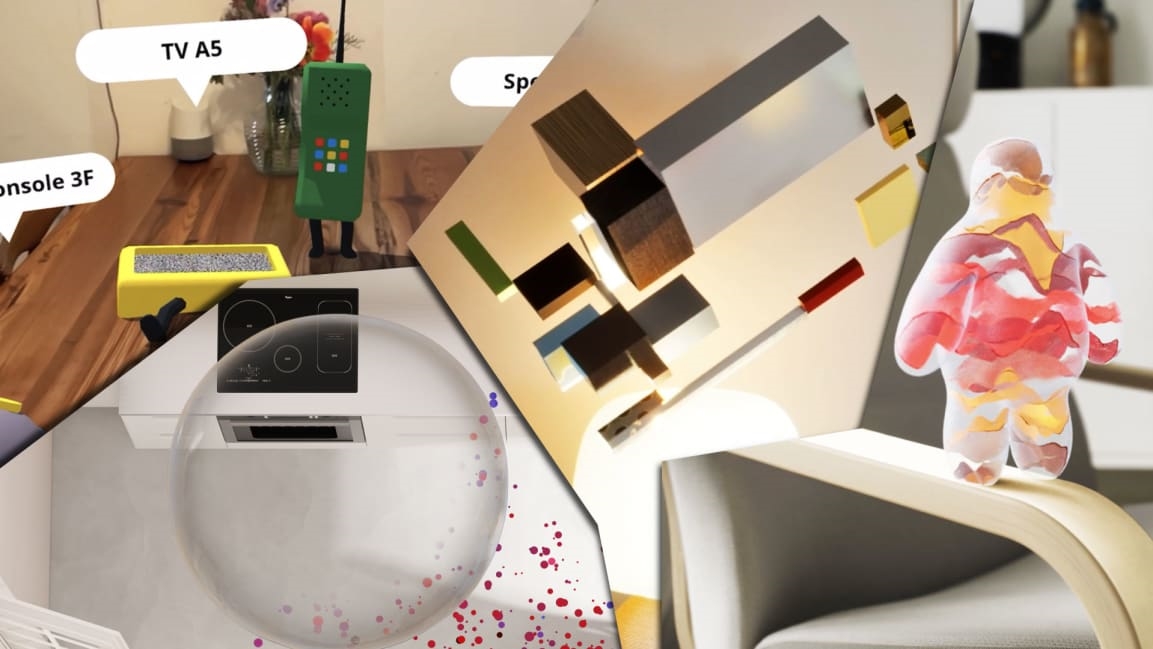4 wild concepts show what a futuristic, Ikea-designed smart home might look like
Although Ikea is only starting to dabble in smart home tech with light bulbs, speakers, and blinds, the Swedish furniture giant is showing off a vision that’s much more ambitious.
Someday, for instance, you might use augmented reality to visualize how your computer and TV share data with one another, or to look up the environmental impact of all of your gadgets. You might even use spatial audio to designate parts of your home as “silent zones,” or enlist a digital avatar to warn you of potential privacy threats.
To be clear, Ikea isn’t turning any of these ideas into products anytime soon, but it enlisted its innovation research and design lab, Space10, and a group of external designers to come up with them as a way to reflect on what the future holds for smart homes. The first of these “Everyday Experiments” concepts launched last year, and the latest batch focuses on privacy and trust in an effort to explore what a respectfully designed, noninvasive smart home might look like.
“We wanted to go about it where privacy is not a dystopia, and we’re not working at it from a dystopic point of view,” says Tony Gjerlufsen, Space10’s head of technology. “Privacy shouldn’t be a chore either.”
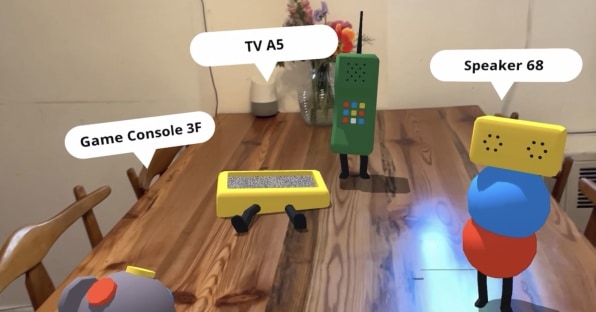
The augmented home
The clearest example is “Invisible Roommates” by designers Nicole He and Eran Hilleli. Using augmented reality, it envisions smart home devices as cute characters that sit next to their real-world counterparts. When those devices communicate with one another, the AR versions represent the flow of data as a trail of paper planes.
Another experiment by the London-based design studio Field, called “Digital Buddy,” touches on a similar idea. It envisions users talking to a small, blob-like avatar to ask about the privacy policies of other products and services. The AI would then scan through those companies’ terms of service and read out relevant information, such as whether a service can read the content of your private messages.
A second concept by Field, called “Chain of Traceability,” imagines that household objects would be registered on a blockchain, which would store information about materials, carbon footprint, and production process. The idea would be for users to scan those products with an AI application so they could make more informed purchasing decisions.
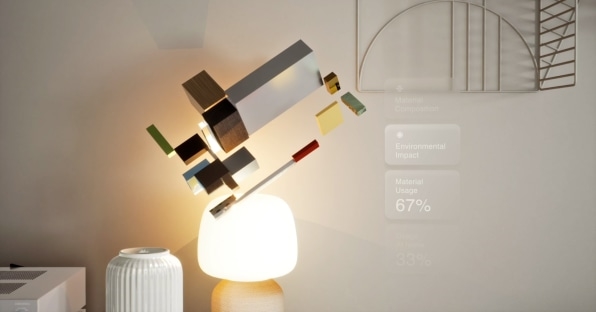
Perhaps the wildest idea of all, though, is Yuri Suzuki’s “Sound Bubbles,” which imagines using an AI app to cordon off silent parts of the home. Users could then steer sound away from those quiet spaces using 3D spatial audio.
From concept to reality
Since these are design concepts rather than working prototypes, there’s no guarantee that Ikea will realize any of them. Still, some of Space10’s ideas do have roots in existing technology.
Augmented reality applications, for instance, are widely available today on iOS and Android devices, and Ikea itself has an app that helps people visualize furniture in their homes. AI assistants like Apple’s Siri, Amazon’s Alexa, and Google Assistant are now ubiquitous, as are resources like TOSDR for making terms of service agreements more digestible. Spatial audio is starting to make its way into smart speakers as well, with both Apple’s HomePod and Amazon’s Echo Studio supporting virtual surround sound.
Georgina McDonald, Space10’s lead design producer, says the goal with these projects is to get people thinking about what’s possible in a way that doesn’t require years of product development. The latest ideas, for instance, were developed over a 9- to 12-week period. (There’s also a chance that Ikea may patent some of the ideas for itself, or use them as inspiration.)
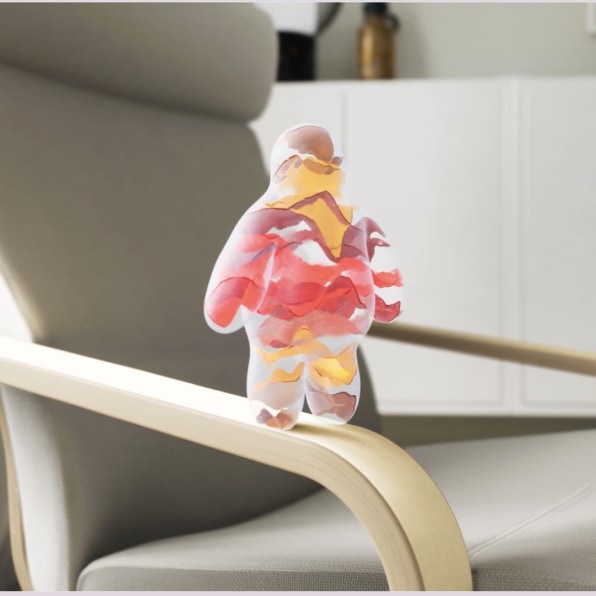
“It’s a way to challenge people to use and integrate and remake these technologies, and having an opportunity to do it in a fast-paced environment,” McDonald says, “rather than working in a basement for three years, launching it to all, and hoping for the best.”
To that end, McDonald would still like to see Space10 and its partner designers push further on the privacy front with future experiments. She notes that none of the current projects touched on whether smart home tech belongs in people’s bathrooms, but that could change next time around.
“It was a really difficult topic,” she says, “because data and ethics play a pretty large role in what’s actually doable in the home and what people are willing to give up.”
As Ikea looks to distinguish itself from Big Tech companies while building a smart home business around its furnishing empire, inevitably it’ll have to answer those questions for itself.
Fast Company , Read Full Story
(50)

